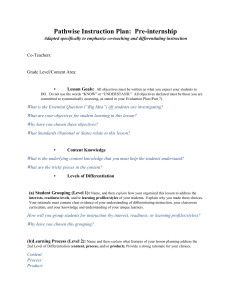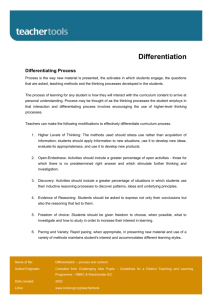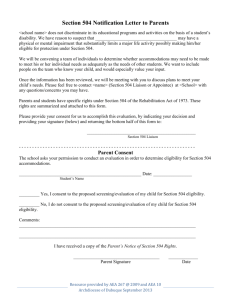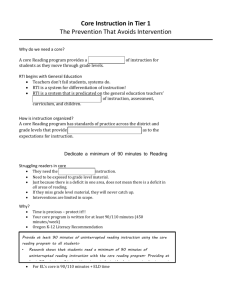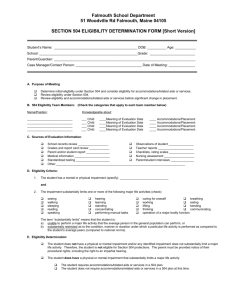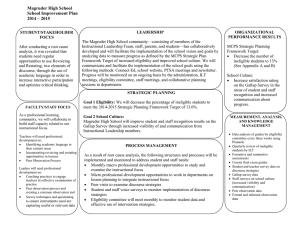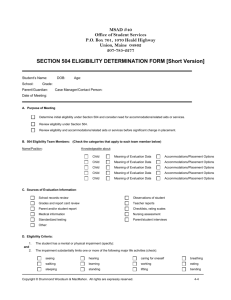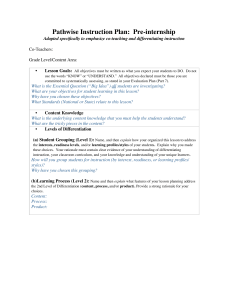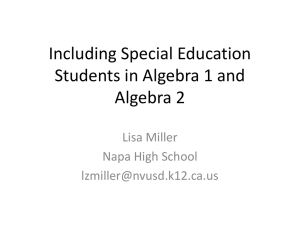File
advertisement
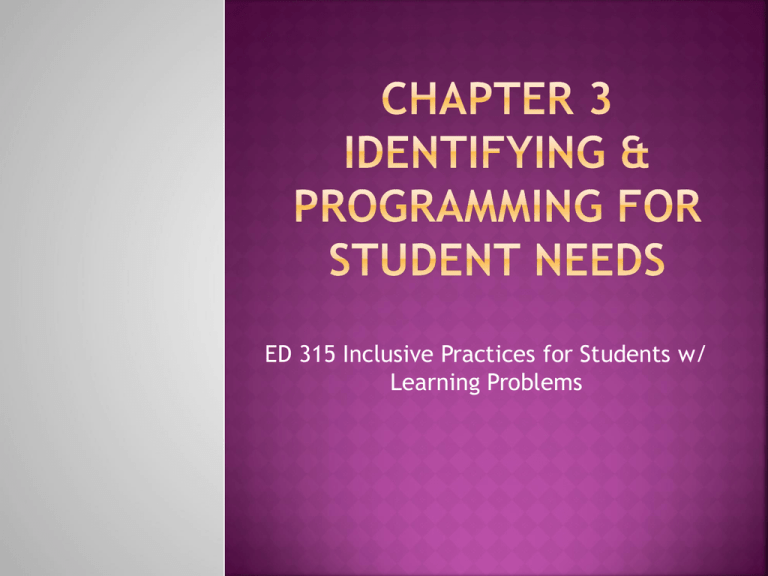
ED 315 Inclusive Practices for Students w/ Learning Problems Identify Pre-referral Interventions The Special Education Process Section 504 Eligibility and Planning • • • • UDL: Universal Design for Learning RTI: Response to Intervention Both have shown improve learning for all students Practices incorporate ongoing assessment to determine the most effective, scientifically based intervention designed to keep students successfully learning in the general education classroom. 1. 2. 3. The best interests of the student and his/her unique needs and strengths should dictate all aspects of the decision-making process Parents are to be equal partners in the process; sensitivity to family values and cultural differences must pervade all activities Ongoing and effective home-school collaboration efforts should be established 4. Parents and students have a right to and should be given information about the educational performance of the student, the special education programs and services to which the student is entitled and from which the student may receive benefits, and what will happen after formal schooling ends. 5. Each students should be taught and encouraged to participate as an active, contributing member of the team. 6. Programs and services, including the rules and regulations that apply, should be reviewed continuously, and improvements should be made whenever possible and allowable under the law. • It is one flexible “whole-school” approach that contributes to progress in the general education classroom in designing assessment methods and teaching strategies to accommodate a wide range of individual abilities and preferences Components: Multiple Means of Representation Multiple Means of Engagement Multiple Means of Expression It is an alternative process recommended for identifying students who are potentially eligible for services under the category of learning disabilities • It is preferred • Three tiered Approach (See fig. 5.2) • • • • Concern from the classroom teacher Report to the Prereferral Intervention Team (also called CST-Child Study Team) Identify interventions to accommodate & modifications See figure 3.3 for a sample • • Accommodations are changes made during assessment or to a child’s education that do not substantially change the curriculum content, the level of instruction and the implications. Modifications are more significant departures from the general education assessment and/or instructional program. See figure 3.4 for the process Formal Referral: -includes basic descriptive information and evidence of the severity and duration of the problem(s) Evidence included: -Work samples -Tests -Behavioral assessment/ behavior log -Report Cards -Cumulative Folder -Pre-referral intervention -Parent information Teachers play four major roles in school-based assessment: 1)Consumers 2) Producers 3) Communicators 4) Developers Purpose of Assessment: -Screening -Identification & eligibility -Program planning -Monitor & Evaluate Formal Assessments Informal Tests Criterion-referenced testing (CRT) Curriculum based Assessment (CBM) Authentic Assessment Portfolio Assessment Ecological Assessment In your group, explain and give an example of the following areas: Measurable Annual Goals (pg.97) Special Education & Related Services and Supplemental Aids & Services (pg. 99) Role of the General Education Teacher in the IEP (pg. 100) Behavioral Intervention Planning (pg. 101) Assistive Technology (pg. 102) Eligibility: -a student having physical or mental impairments that result in a substantial limitations in one or more major life activities Reasonable Accommodations: -Academic or Nonacademic -Extended time to severe allergies to chalk dust Identification of students Provide support for eligibility determination Effectiveness of accommodations See Figure 5.10 Sample Section 504 Accommodation Plan Basic Concepts about Differentiating Instructions Comprehensive Model of Differentiating Instruction It is the process to approach teaching and learning for students of different abilities in the same class. The intent of differentiating instruction is to maximize each student’s growth and individual success by meet each student where he/she is and assisting the learning process. Adaptation: specific changes made on the way content is presented and student respond to instruction Modification: actual changes made to the content itself Accommodation: changes that are made to support students with various educational settings Two levels: Macro and micro levels Operating Procedures: Determine the need for differentiation Identify Specific Areas of Need Implement Various Differentiation Practices-Least Restrictive First Monitor Student Progress Evaluate and Modify Differentiation Practices Content Setting Materials Model of Differentiated Instructions Affect Intervention Management Preferential Seating Classroom Arrangements Accessibility Specialized Equipment Study Skills Learning Strategies Social Skills Related Life Skills Textual Materials -Adapting textual materials -Enhancing Comprehension -Adapt text-based activities -Retaining information acquired through text Adapting Other Instructional Materials -Math Materials -Learning Aids Learning Considerations Delivery of Systematic and Explicit Instruction Instructional Planning In-class Activities Assignments and Products Homework Adjustments Testing Options and Adjustments Grading Considerations o o o o o o General Expectations Classroom Rules Classroom Procedures Managing Behaviors Behavior Management Plans Positive Behavioral Supports A) How would you Create and Increase Desirable Behaviors with your students with special needs? pg. 138 B) What are Group Contingencies and what are some examples of that pg. 140 C) What would your plan be to decrease Undesirable Behaviors, pg. 141
